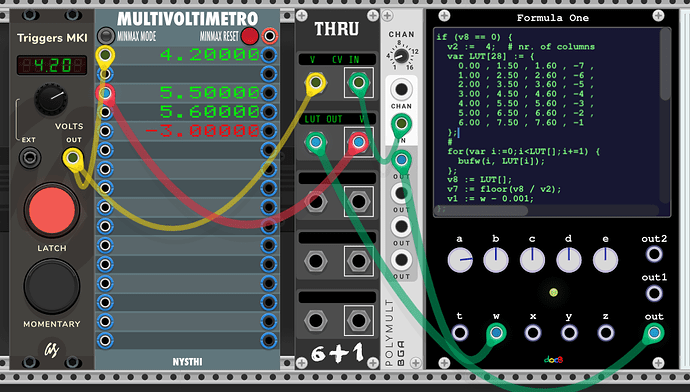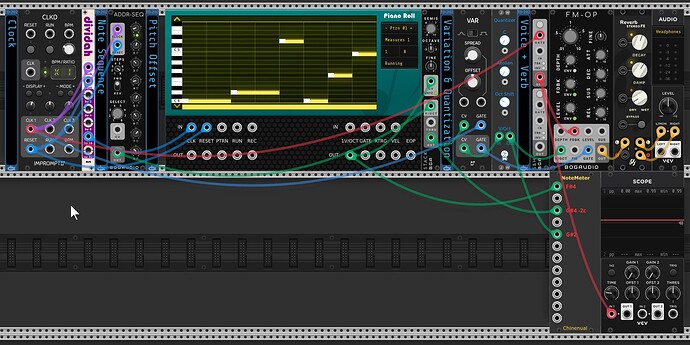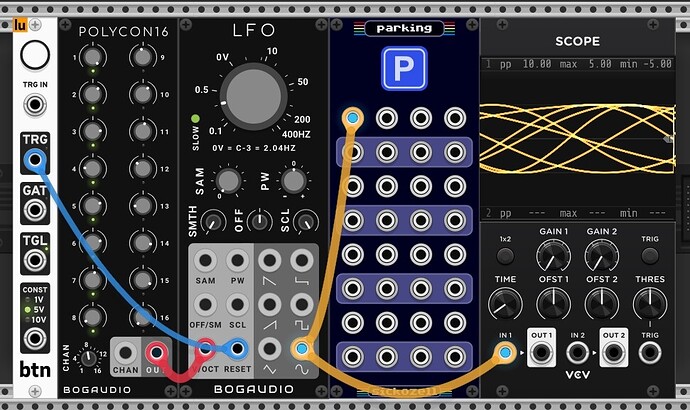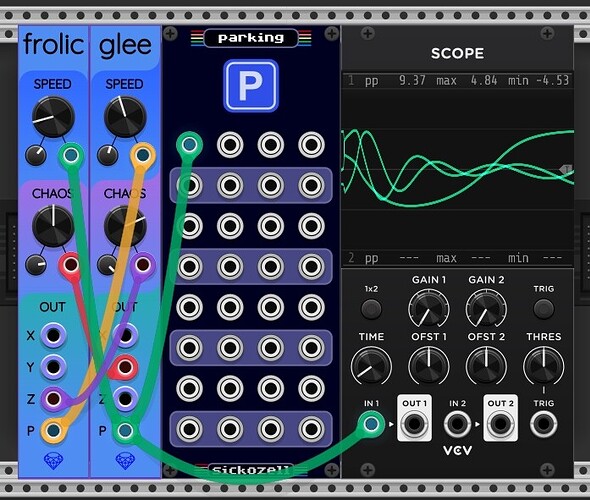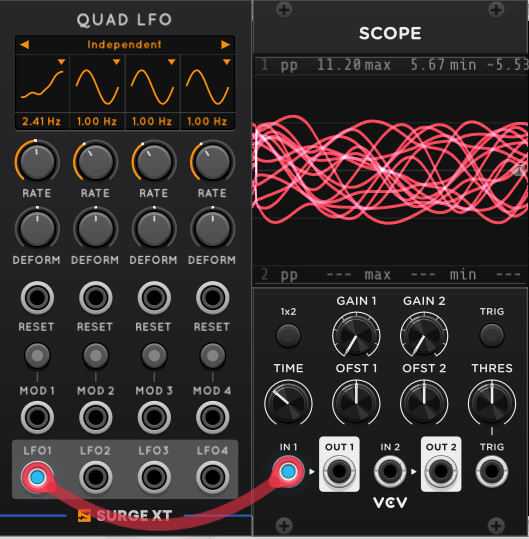I am so sorry that you have so much trouble. It does not even seem that you are doing anything precarious, which doubles the aggravation ![]() . Might be good to just turn off the machine for a while and take a mental break.
. Might be good to just turn off the machine for a while and take a mental break.
Turning off the machine is easy. Turning off my brain is another matter ![]()
LOL. I know how that feels… ![]()
I actually submitted an FR this morning to support to preserve MIDI mappings when hitting File->Import Selection. Pipe up to add your vote! The more the more likely it gets implemented.
Nice ambient pad patch (or rather selection ![]() ).
).
Great idea, thank you for taking the time! Actually, isn’t this a bug rather than a new feature?
I suspect that Andrew (understandably) is even more busy than 5 yrs ago. Can you provide a link to support the request?
There is no link, as this has to go via email to support. Simply state that you’s like to support the feature request to preserve MIDI mappings submitted yesterday by me, that should do it… I was on the fence between FR and bug, maybe state that you consider it a bug as well?
Done.
Shimmer Reverb.vcvs (10.0 KB)
Click-Free Audio Looper.vcvs (8.9 KB)
Here’s a couple I use a lot, DIY shimmer verb and a looping sub-patch with a short fade in/out. I like to loop stuff post-FX, so I can capture bits of granular delay and reverb tails without annoying clicks. Just connect whatever you want to loop into the Nysthi autoXfade inputs.
Both of them are very nice and useful, thank you!
Thanks, I’ll see what else I can dig out!
This is a useful selection I sometimes have in my patches:
lut_poly_f1.vcvs (4.1 KB)
CV LookUp Table using docB Formula One
Convert incoming CV ranges into discreet (multiple/polyphonic) output CV values using a predefined lookup table. The lookup table can be changed in the F1 code, using a list of comma separated values. Table lookup is implemented with a binary search algorithm, so it should be efficient, even for large lookup tables.
Usage:
- connect incoming CV to “w” input of F1
- connect it directly when having only one output value (remove BOG Polymult in that case)
- connect through BOG Polymult to F1’s “w” input when multiple output values in the lookup table, and set “CHAN” to the nr. of output channels
- in F1, replace “LUT” table definition with wanted values these can be values exported from a spreadsheet in Comma Separated Value (CSV) text format (note: no comma after last element!)
- first column contains input value ranges
- set “v2” to the nr. of columns in the table (= 1 + nr. of outputs)
“out” will have the looked up values from the table (can be polyphonic!)
w input values lower/higher than the first/last index value in the table will also output the first/last output values in the table
This looks great! Can you point to one or two use cases where the lookup table comes in handy?
Pitch variation for sequences
Pitch sequence variation_Piano Roll_Alphagem-O_20240403.vcvs (28.1 KB)
Pitch sequence variation_ADDR-SEQ_Alphagem-O_20240403.vcvs (24.3 KB)
The pitch of a given sequence (here 16 steps in Piano Roll by RCM, monophonic) is offset every 4 beats by another, slower Piano Roll to vary the pitch level of the melody, e.g. to follow the chords.
In addition, random noise is added to the pitch CV using Impromptu’s Variations module for an occasional note offset, yielding a very slightly altered sequence on every cycle.
A quantizer (JW) keeps notes in scale. Velocity is set in the first Piano Roll and connects to feedback on FM-OP for movement.
In a variant, a 7-step sequence is created with ADDR-SEQ and FM-OP's feedback is controlled by S&H (Bogaudio).
These are cool. Here I have Meander conducting the piano roll sequence with both in the same mode and root via Meander’s poly external scale (PES) output and the Grande Quant quantizer which can understand PES. In this, Meander is set to a diatonic PES but can be set to a pentatonic PES scale via Meander’s right click menu.It is in Am (Aeolian A)
Polyphonic LFO
Polyphonic LFO_Alphagem-O_20240405.vcvs (4.9 KB)
As shown by @VirtualModular in a recent ambient drone tutorial. Reset button added to sync LFO phases. Set overall frequency range in LFO (Bogaudio). Set number of channels in Polycon16 (Bogaudio) and randomize its output for frequency variation.
Three irregular LFOs using Glee and Frolic, polyphonic, cross-modulation
Smooth irregular LFO w. Frolic+Glee_Alphagem-O_20240405.vcvs (3.6 KB)
Outputs an irregular smooth modulation signal with three channels in a polyphonic cable. Frolic and Glee cross-modulate each other, constantly speeding up and slowing down the speed of the output. Set speed range with Speed knobs.
Cheers @Alphagem-O ! That’s my favourite trick for getting 16 LFOs from 2 modules. Here’s another tip: try the sample and hold output (top right), I use that loads if I want a quick way of getting 16 channels of S&H (Count Modula’s Super S&H is pretty good too though). I still need to check out Frolic and Glee, so thanks for uploading that - looks like an interesting mod source.
I too cherish polyphonic modulation, as it opened a whole new world for me in terms of movement.
With Polycon16 (as with many other Bogaudio modules), I like that the output range can be set in the context menu. Choosing e.g. +/- 1V can eliminate the VCA you use in your video tutorial to curb the signal.
LLFO (Bogaudio) is great, too. It handles polyphonic signals similar to LFO (Bogaudio), but has a smaller footprint. LFO adds control over pulse width, smoothing and sampling rate in the GUI, whereas these are adjusted via the context menu in LLFO.
Thank you for the tip with the stepped random! It’s very useful when you desire an S&H-like behavior without actually pulling the trigger to sample the value(s), leading to both, amplitude and time point being randomized.
In a variant, I replaced Polycon16 with a combination of Polymult (Bogaudio) and VCV’s RND module to supply random polyphonic V/Oct to LLFO. It generates up to 16 stepped random signals in a small space.
Polyphonic stepped random
